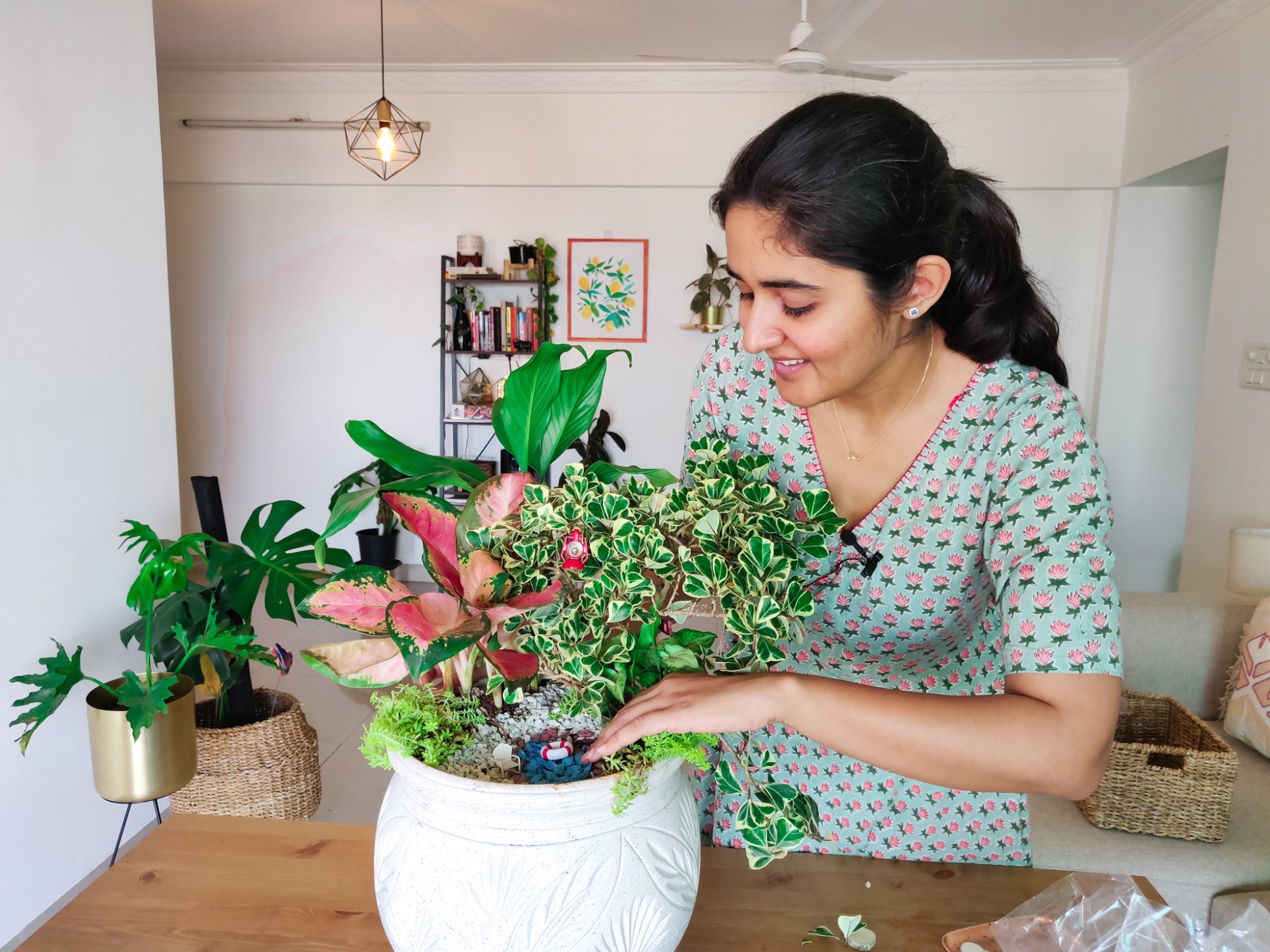In India, green influencers plant seeds of knowledge to liven up urban homes
[ad_1]
Shrinking spaces and soaring real estate prices have spurred the rise of online nurseries, garden connoisseurs, plant enthusiasts and consultants specialising in designer indoor horticulture.
“People recognise me wherever I go. It gives me immense joy,” said Guttikonda, beaming as she recalls her journey over the years.

A TEDx speaker and winner of multiple awards, Guttikonda’s channels collectively have more than 1 million subscribers, a massive following for someone producing content on such a niche topic.
Launched in 2018, Mad Gardener was a pioneering video channel dedicated to growing plants in India’s urban and semiurban landscapes. Since then, Mad Gardener has grown, inspiring even more channels, with many of her followers producing their own content.
Through simple methods and language, Guttikonda’s videos focus on educational organic gardening, pest control and fertilising.
“Plants can respond. There’s some connectivity. When you get that connection, everything is simple,” Guttikonda said, explaining the secret behind her green fingers.
From setting up balcony or terrace gardens to maintaining plants and selecting suitable greens, each plantfluencer attempts to carve out their own niche. Some channels even specialise in offering short video clips and hacks for improving garden set-ups.
A growing trend
Market research by the agency GreyViews values the Indian indoor plant market at about US$5 billion in 2021, with expectations to double by 2029. This enormous potential is fuelled by digital platforms.
Seema Tripathi, head of customer delight at the Pune-based online nursery Ugaoo, said awareness of environmental sustainability led to a “drastic rise” in those curious about gardening, which in turn pushed others towards plant influencing.
Social media platforms have played a significant role in popularising plant-related content, leading to the emergence of ‘plantfluencers’
“It is not just a hobby any more,” said Tripathi.
“Social media platforms have played a significant role in popularising plant-related content, leading to the emergence of ‘plantfluencers’ who share tips, trends and their gardening experiences.”
India’s social media ecosystem has been teeming with all kinds of do it yourself content, given the rapid penetration of cheap internet and inexpensive smartphones. This includes materials on food-growing systems in urban areas.
Drought-hit Indian farmers’ fruitful pivot to ‘the only crop that can survive’
Drought-hit Indian farmers’ fruitful pivot to ‘the only crop that can survive’
“Nurseries catering to a diverse range of plants, including rare and exotic species, have gained popularity. There is an increased demand for information and resources on sustainable and organic gardening practices,” she added.
‘Meditative effect’
India is currently home to around nine of the world’s most 25 most polluted cities. And there is no sign that will change in the foreseeable future. Combine that with the vertical growth of residential and commercial buildings, and it’s easy to understand why urban dwellers are forced to move their plants indoors with no space elsewhere.
But indoor plants possess a growing appeal for plenty of other reasons. Vinayak Garg, founder of gardening start-up Lazy Gardener, listed three: “aesthetics, biology and companionship”.

“Plants are a great interior decor trend now. Anyone who’s into home decor now wants to keep a plant alive,” he said. “The second is biology, whether one believes a plant’s presence purifies the air or wants to use it as a source. The third is the therapeutic company of plants.”
Garg’s platforms are interactive, with followers constantly asking questions about what is good for the plants. “Earlier, people used to visit a nursery and buy what was available there. Now, people visit nurseries with their demands. That’s why we have non-native plants as well,” he said.
Others tend to agree that people aspire to have greener spaces around them as part of a healthier lifestyle. The market for plant-based food has also been growing exponentially, with plant-based alternatives mushrooming across the country.

Chaudhary’s pages are filled with tips and advice on how to convert home corners into green nooks, and special sessions for plant enthusiasts to share how their hobby has blossomed.
“You would not believe how many people started with one plant in 2020 and now have over 200 plants on their balcony or terrace,” said Chaudhary. “It is incredible.”
[ad_2]
Source link

